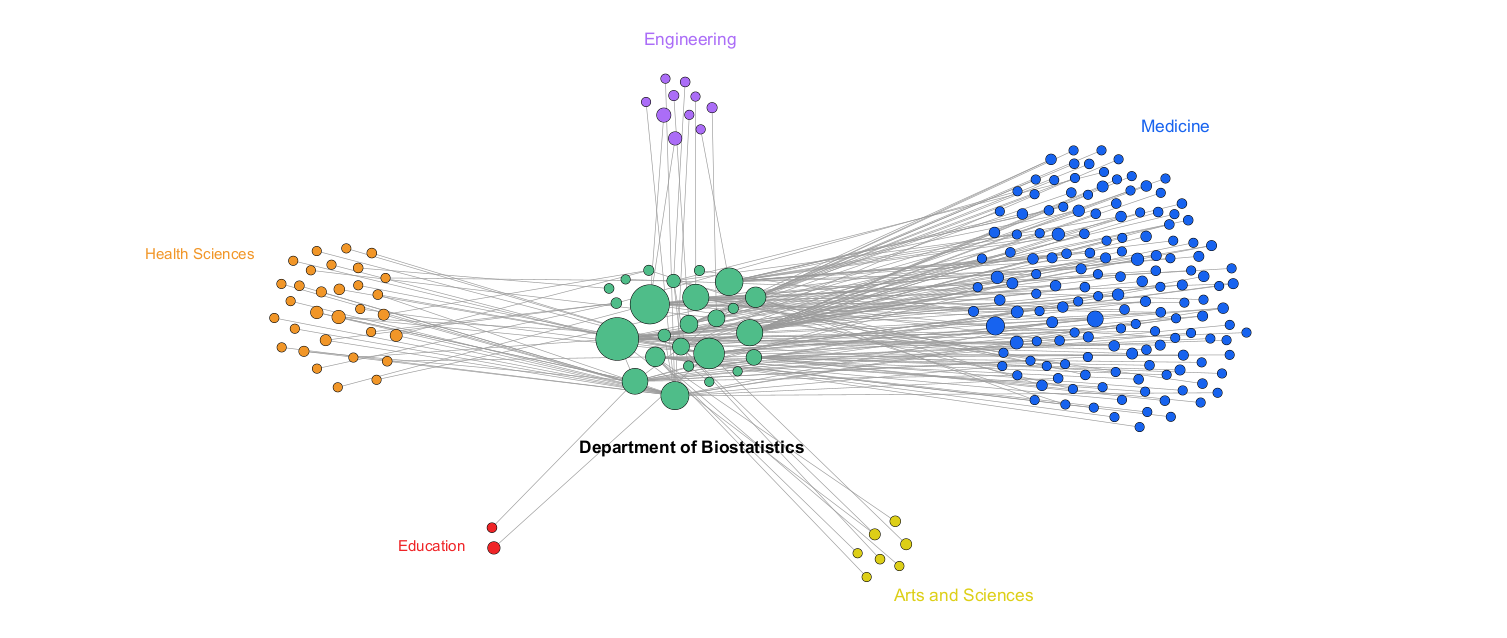The Department of Biostatistics maintains an active research program, both in the development of statistical methodology and collaboration on research projects in public health and medicine. Since 1995, our faculty members have coauthored more than 600 publications in a variety of research areas and are currently responsible for the statistical analysis of more than $100 million of funding to conduct research in the public health and biomedical areas.

Strengths
- Statistical methodology
- AIDS/HIV
- Cancer treatment and prevention
- Cardiovascular disease
- Childhood disease
- Comparative effectiveness research
- Health services
- Occupational and environmental health
- Radiological imaging systems
- Treatment for psychiatric problems
Highlights
Cancer Treatment and Prevention
- Department faculty and staff design, implement, and analyze the research that has led to the National Surgical Adjuvant Breast and Bowel Cancer Project (NSABP) Biostatistical Center’s findings on breast-conserving surgery and the benefits of adjuvant chemotherapy and hormonal therapy.
- The Biostatistics Facility of the University of Pittsburgh Cancer Institute, which resides within the department, has supported more than 60 clinical cancer research protocols and 70 grant proposals since 2005, including 12 program projects and three successful National Cancer Institute-funded Special Projects of Research Excellence in lung, skin, and head and neck cancer.
Childhood Disease
- The Juvenile Onset Diabetes Project at Children’s Hospital of Pittsburgh of UPMC is a 30-plus-year project focusing on the etiology and prediction of type 1 diabetes. This research provides a better understanding of the risk factors contributing to the increase in cases of childhood diabetes.
Occupational and Environmental Health
- The department led a large study of Allegheny County steelworkers that identified coke oven work and its constituent exposures as significant risk factors for the development of lung and kidney cancers.
- In 2001, the International Agency for Research on Cancer reclassified glass wool, used worldwide for residential and commercial insulation, from a possible human carcinogen to not classifiable as a human carcinogen based largely on the results of a large-scale Center for Occupational Biostatistics and Epidemiology (COBE)-based cohort study of fiber glass production workers.
Statistical Methodology
- In addition to collaborative research, the department is active in the development of new statistical methodology. Areas of methodological research in biostatistics include clinical trials design, comparative effectiveness research, exploratory data analysis, inter-rater reliability, missing data analysis, receiver-operating characteristic (ROC) analysis, sampling, sequential methods, statistical genetics, stochastic modeling, and survival analysis.
Collaborating Partners
- National Cancer Institute
- Pitt Public Health departments
- University of Pittsburgh Cancer Institute
- VA Pittsburgh Healthcare System
- Western Psychiatric Institute and Clinic
- University of Pittsburgh School of Medicine Departments of Critical Care Medicine, Radiology, and Otolaryngology
Learn more about the faculty members involved in these research areas.